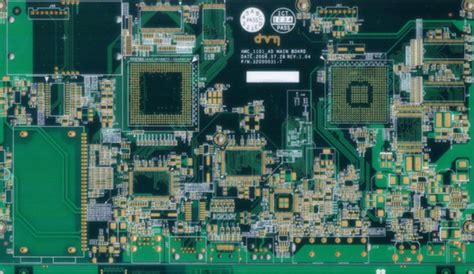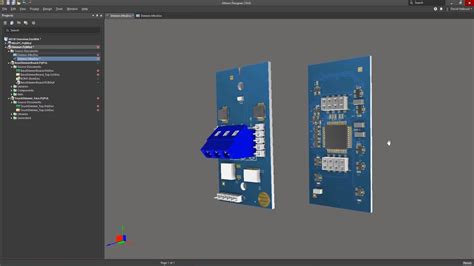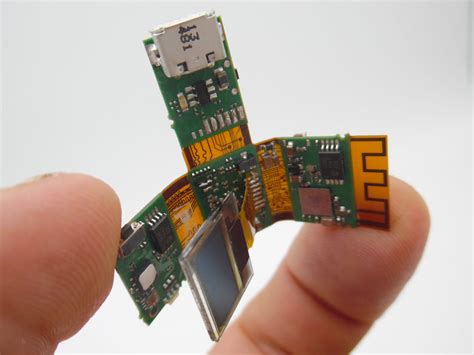Radio Frequency (RF) Circuit Board Design
Successful RF design must pay careful attention to every step and every detail of the entire design process, which means that thorough and careful planning must be carried out at the beginning of the design, and the progress of each design step must be comprehensively and continuously evaluated. And this kind of meticulous design skills are exactly what most domestic electronic corporate cultures lack.
In recent years, due to the demand and growth of Bluetooth devices, wireless local area network (WLAN) devices,
and mobile phones, the industry has paid more and more attention to the skills of RF circuit design. From the past to the present, RF circuit board design, like electromagnetic interference (EMI) problems, has always been the most difficult part for engineers to control, or even a nightmare. If you want to succeed in the design at once, you must plan carefully and pay attention to details in advance to work.
Radio Frequency (RF) Circuit Board Design is often described as a “black art” because there are still many uncertainties in theory.
But this is just a partial view. There are still many rules to follow in RF circuit board design. However, in actual design, the real practical skills are how to compromise these rules when they cannot be implemented due to various restrictions. Important RF design topics include: impedance and impedance matching, insulation layer materials and laminates, wavelength and harmonics, etc. This article will focus on various issues related to RF circuit board partition design.

Types of micro vias
Circuits of different properties on the circuit board must be separated, but they must be connected in the best case without generating electromagnetic interference, which requires the use of micro vias. Usually the diameter of micro vias is 0.05mm to 0.20mm. These vias are generally divided into three categories, namely blind vias, buried vias, and through vias. Blind vias are located on the top and bottom surfaces of the printed circuit board and have a certain depth. They are used to connect the surface circuits and the inner circuits below. The depth of the holes usually does not exceed a certain ratio (aperture). Buried vias refer to connection holes located in the inner layer of the printed circuit board, which do not extend to the surface of the circuit board. The above two types of holes are located in the inner layer of the circuit board. They are completed by the through-hole forming process before lamination. During the via formation process, several inner layers may be overlapped. The third type is called a through hole, which passes through the entire circuit board and can be used to achieve internal interconnection or as a component adhesive positioning hole.
Use partitioning techniques
When designing an RF circuit board, the high-power RF amplifier (HPA) and the low-noise amplifier (LNA) should be isolated as much as possible. Simply put, keep the high-power RF transmitting circuit away from the low-noise receiving circuit. If there is a lot of space on the PCB board, this can be easily done. But usually when there are many components, the PCB space becomes very small, so this is difficult to achieve. They can be placed on both sides of the PCB board, or they can work alternately instead of working at the same time. High-power circuits can sometimes also include RF buffers and voltage-controlled oscillators (VCOs).
Design partitioning can be divided into physical partitioning and electrical partitioning. Physical partitioning mainly involves issues such as component layout, orientation and shielding; electrical partitioning can be further divided into power distribution, RF routing, sensitive circuits and signals, grounding and other partitions.
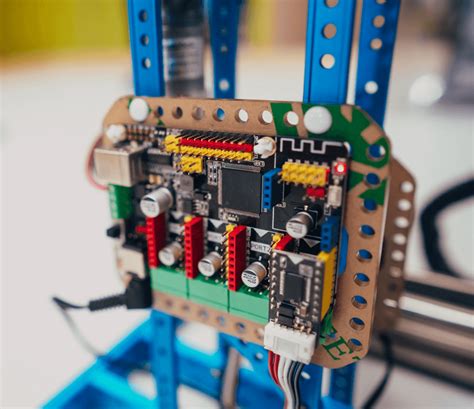
Physical partitioning
Component layout is the key to achieving an excellent RF design. The most effective technique is to first fix the components on the RF path and adjust their orientation to minimize the length of the RF path. Keep the RF input away from the RF output and as far away from high-power circuits and low-noise circuits as possible.
The most effective circuit board stacking method is to arrange the main ground on the second layer under the surface layer and run the RF line on the surface layer as much as possible. Minimizing the size of the vias on the RF path can not only reduce the path inductance, but also reduce the number of cold solder joints on the main ground, and reduce the chance of RF energy leaking to other areas in the stacked board.
In physical space, linear circuits such as multi-stage amplifiers are usually sufficient to isolate multiple RF areas from each other, but duplexers, mixers, and intermediate frequency amplifiers always have multiple RF/IF signals interfering with each other, so this effect must be carefully minimized. RF and IF traces should be crossed as much as possible, and a ground area should be separated between them as much as possible. Correct RF path is very important for the performance of the whole PCB board, which is why component layout usually takes up most of the time in mobile phone PCB design.
On mobile phone PCB boards, it is usually possible to place the low noise amplifier circuit on one side of the PCB board and the high power amplifier on the other side, and finally connect them to one end of the RF antenna and the other end of the baseband processor on the same side through a duplexer. This requires some skills to ensure that RF energy does not pass from one side of the board to the other side through vias. A common technique is to use blind vias on both sides. The adverse effects of vias can be minimized by arranging blind vias in areas that are not subject to RF interference on both sides of the PCB board.
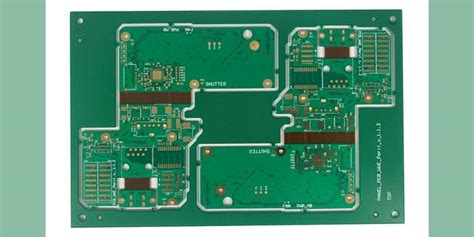
Metal shielding
Sometimes, it is not possible to keep enough separation between multiple circuit blocks. In this case, it is necessary to consider using a metal shielding cover to shield the RF energy in the RF area, but metal shielding covers also have side effects, such as: high manufacturing and assembly costs.
It is difficult to ensure high precision when manufacturing irregular metal shields.
Rectangular or square metal shields also restrict component layout. Metal shields are not conducive to component replacement and fault displacement. Since metal shields must be soldered to the ground plane and must be kept at an appropriate distance from components, they take up valuable PCB board space.
It is very important to ensure the integrity of the metal shield as much as possible, so the digital signal lines entering the metal shield should be routed on the inner layer as much as possible, and it is best to set the next layer of the signal line layer as the ground layer. The RF signal line can be routed out from the small gap at the bottom of the metal shield and the wiring layer at the ground gap, but the gap should be surrounded by a large ground area as much as possible, and the ground on different signal layers can be connected together through multiple vias.
Despite the above disadvantages, metal shields are still very effective and are often the only solution to isolate critical circuits.

Power decoupling circuit
In addition, appropriate and effective chip power decoupling (decouple) circuits are also very important. Many RF chips that integrate linear circuits are very sensitive to power supply noise. Usually, each chip needs to use up to four capacitors and an isolation inductor to filter out all power supply noise.
The minimum capacitance value usually depends on the resonant frequency and pin inductance of the capacitor itself, and the value of C4 is selected accordingly. The values of C3 and C2 are relatively large due to their own pin inductance, so the RF decoupling effect is worse, but they are more suitable for filtering lower frequency noise signals. RF decoupling is completed by inductor L1, which prevents RF signals from coupling from the power line to the chip. Because all traces are potential antennas that can both receive and transmit RF signals, it is necessary to isolate RF signals from key lines and components.
The physical location of these decoupling components is also usually critical.
The layout principles of these important components are: C4 should be as close to the IC pin as possible and grounded, C3 must be closest to C4, C2 must be closest to C3, and the connection trace between the IC pin and C4 should be as short as possible. The ground ends of these components (especially C4) should usually be connected to the ground pin of the chip through the first ground layer under the board. The vias connecting the components to the ground layer should be as close to the component pads on the PCB as possible. It is best to use blind holes punched on the pads to minimize the inductance of the connection line. Inductor L1 should be close to C1.
An integrated circuit or amplifier often has an open collector output, so a pull-up inductor is required to provide a high-impedance RF load and a low-impedance DC power supply. The same principle also applies to decoupling the power supply end of this inductor. Some chips require multiple power supplies to work, so two or three sets of capacitors and inductors may be required to decouple them separately. If there is not enough space around the chip, the decoupling effect may not be good.
It is particularly important to note that inductors are rarely placed in parallel, as this will form an air-core transformer and generate interference signals by mutual induction, so the distance between them should be at least equal to the height of one of them, or arranged at right angles to minimize their mutual inductance.
Electrical partitioning
Electrical partitioning is the same as physical partitioning in principle, but it also includes some other factors. Some parts of modern mobile phones use different operating voltages and are controlled by software to extend battery life. This means that mobile phones need to have multiple power supplies, which creates more isolation problems. The power supply is usually introduced by a connector and immediately decoupled to filter out any noise from outside the circuit board. After passing through a set of switches or linear regulators, the power supply is distributed.
In mobile phones, the DC current of most circuits is quite small, so the trace width is usually not a problem. However, a separate high-current line as wide as possible must be designed for the power supply of the high-power amplifier to minimize the transient voltage drop during transmission. In order to avoid too much current loss, multiple vias are needed to transfer the current from one layer to another. In addition, if the power supply pin of the high-power amplifier is not adequately decoupled, the high-power noise will radiate to the entire circuit board and cause various problems. The grounding of the high-power amplifier is very important and often requires a metal shielding case to be designed for it.

